UK Steam Tour, April 2011
By Peter Limper
| Day 3 Inverness to Wick (bus, 104 miles); Wick to Inverness (train, 161 miles) |
| Because of time and scheduling limitations, we traveled by bus from Inverness to Wick, driving through both bright sunshine and fog rising from the North Sea. |
| We arrived at Wick, a station at the extreme north-east corner of Scotland; the diesel had brought our train from Inverness overnight. |
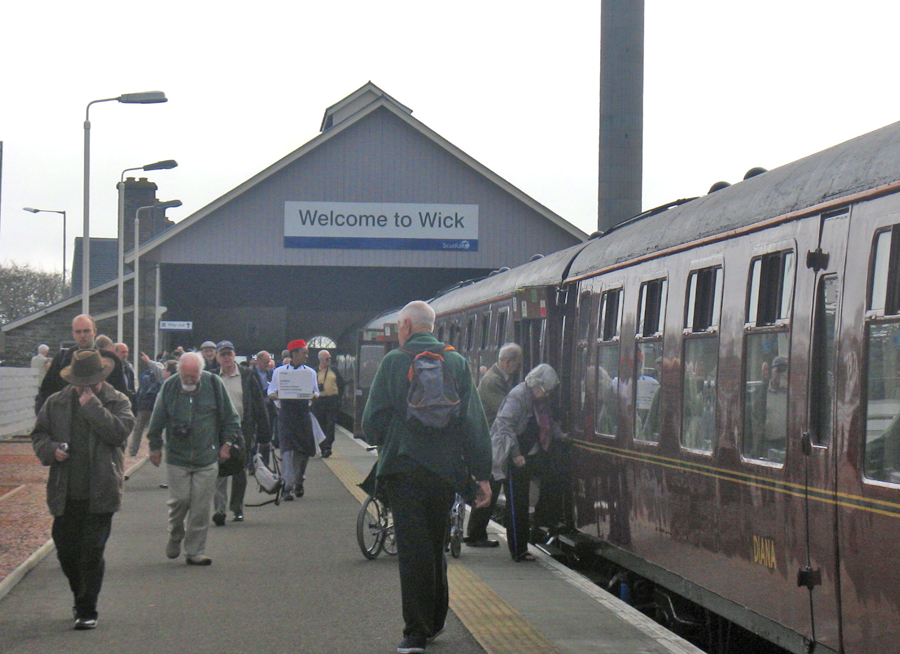 |
| These open lever-frame switch controls are still used in smaller British yards; note that the rail here is the older “bullhead” type which is curved on both the top and bottom and must be secured to the ties by special chairs. |
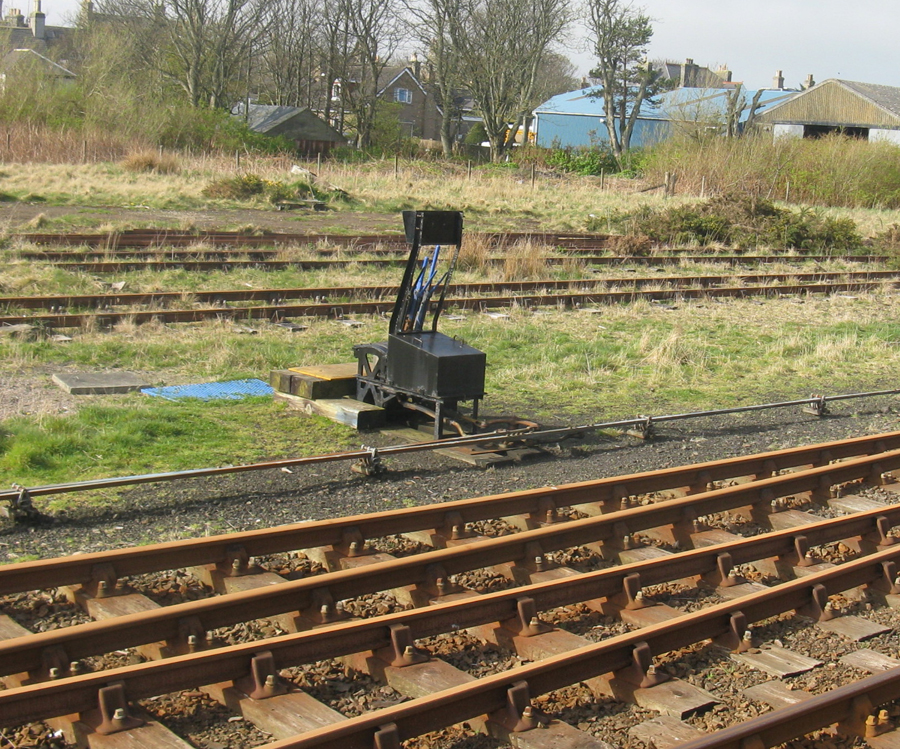 |
| From Wick to Inverness the train was double-headed by two "Type 5 mixed traffic" engines, usually known as "Black Fives." |
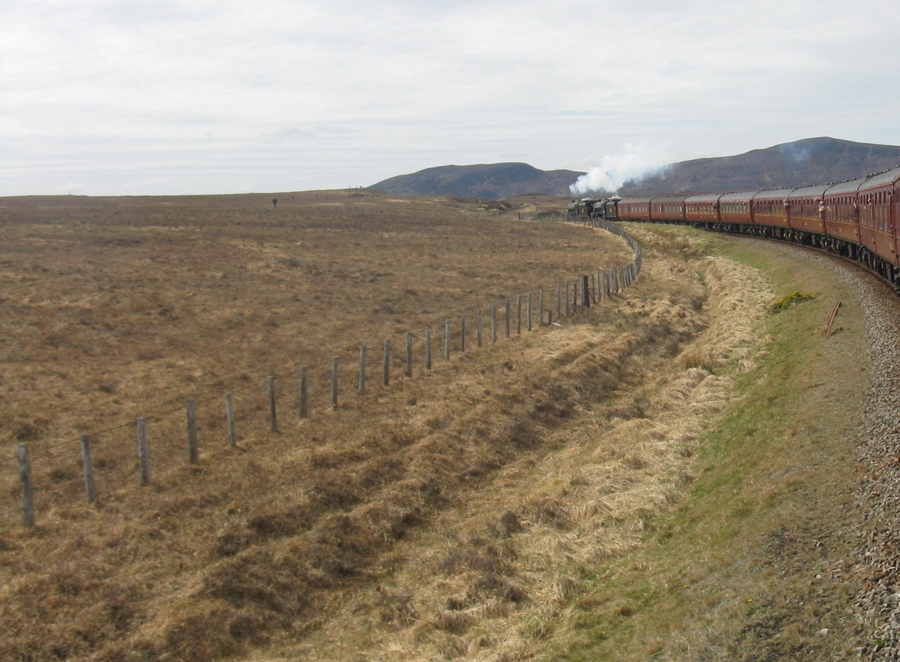 |
| Lettered here for British Railways, the Black Fives were originally designed and built by the London, Midland and Scottish Ry. (LMS). Over 800 Black Fives were built beginning in 1934, making this the most numerous locomotive class in Britain. The engines are straightforward in design, with two outside cylinders connected to 72 drivers. |
| "Mixed traffic" engines were designed to pull both passenger and freight ("goods") trains; the Black Fives were used extensively on the steeply-graded lines in the Scottish Highlands. Although not as graceful as the Royal Scots, they have their own utilitarian charm. |
| Local residents and passengers mingled as they viewed the engines, and a bagpiper serenaded the crowd. |
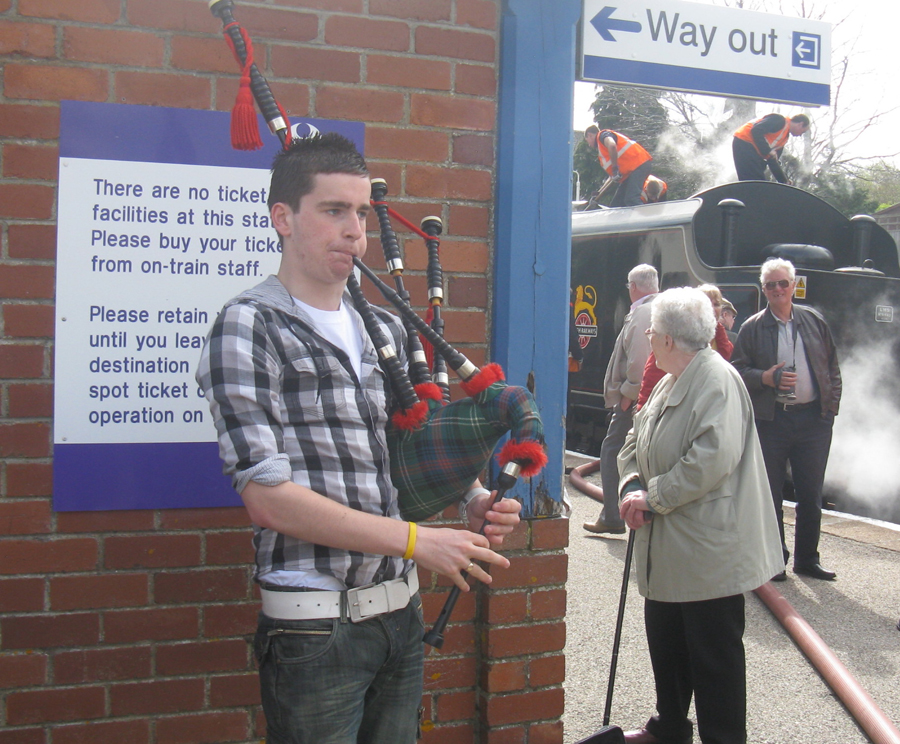 |
| The pedestrian bridge at Helmsdale provided a top view of the Black Fives; a rugged Highland landscape loomed above the train and the signal |
| Back in Inverness, table linens were exchanged in preparation for the next day's trip. |
| Day 4 Inverness to Kyle of Lochalsh (round trip 165 miles) |
| On April 19, the fourth day of our journey, a special train operated on a round trip between Inverness and Kyle of Lochalsh. The train was pulled by 2-6-0 type engine 61994, one of a group of six engines designed in 1937 to work on a steeply graded line in the West Highlands. |
| The engines were designed by Sir Nigel Gresley of the LNER, who also designed the much larger A-4 locomotives that pulled our train between London and Edinburgh; small 61994 bore the rather grandiose name "The Great Marquess." |
| The linkage ahead of the valve chest is part of Gresley’s patented “conjugated” valve gear, which uses motion from the outside cylinders to operate the valves on a third inner cylinder. This arrangement was used under license on UP’s Alco-built 4-12-2’s. |
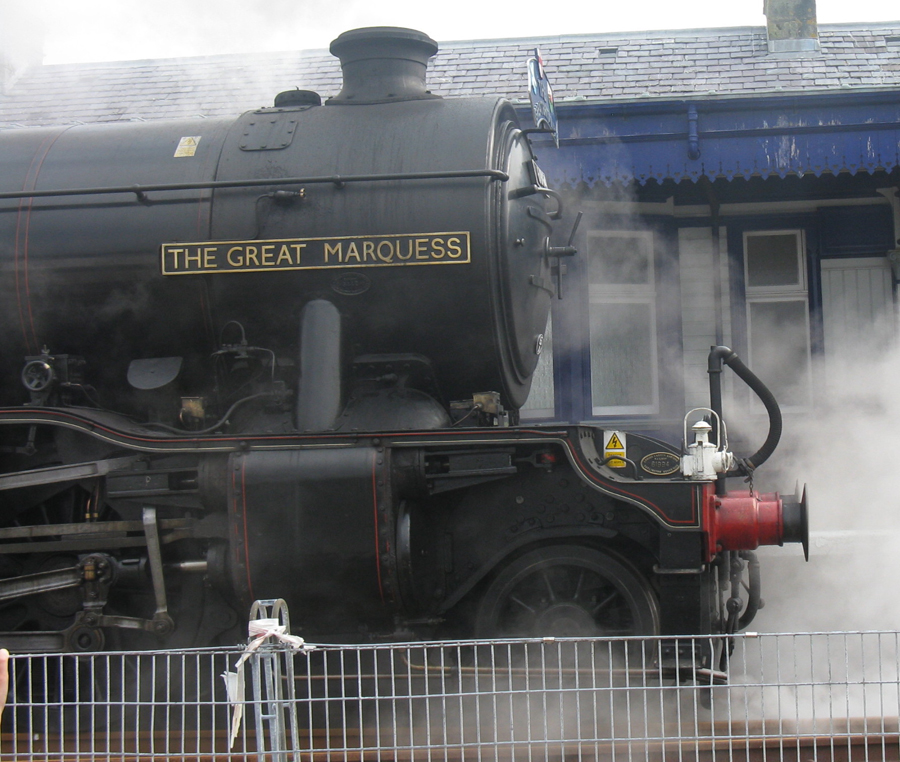 |
| Although the train had a shortened consist of seven cars, the 2-6-0 struggled on a grade, partly because of wet and slippery rails, as an onlooker took pictures. |
| The line terminates at Kyle of Lochalsh, connected by a sweeping highway bridge to the Isle of Skye. |
| As our train rested at a platform at Kyle, on another track a two car diesel multiple unit train (DMU) prepared to depart for Inverness. |
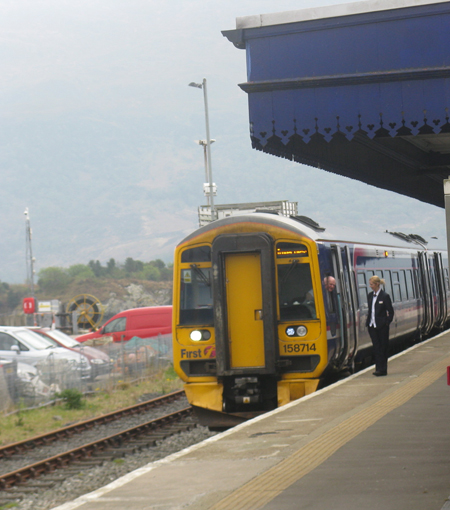 |
| The Great Marquess prepared to back around the train for the return trip: while fans took pictures a small boy covered his ears against the noise of steam from the cylinder cocks. |
| Because there are no turning facilities at Kyle, the engine ran tender-first back to Inverness. |
| Views of the cab interior, name plate, and builders plate of 61994. |
| On the return trip the train paused at another isolated Highlands station; the tank truck at left is bringing water for the engine. |
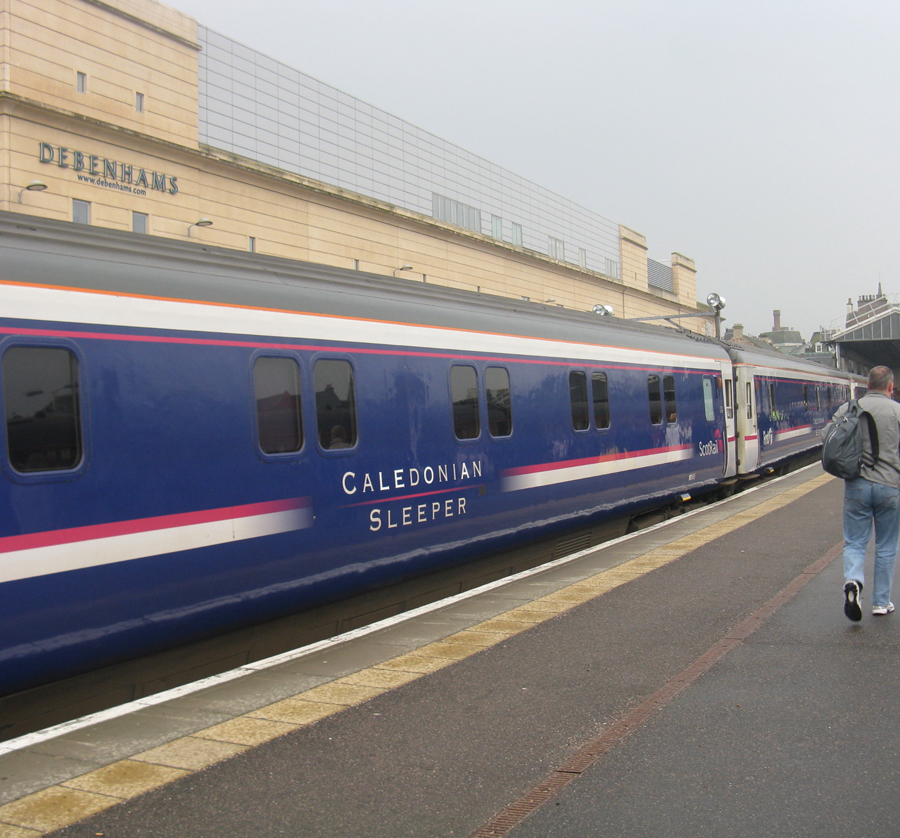 |
| Back in Inverness, a sleeping car train was preparing to depart for London; there is overnight sleeper service to London from several Scottish cities. | 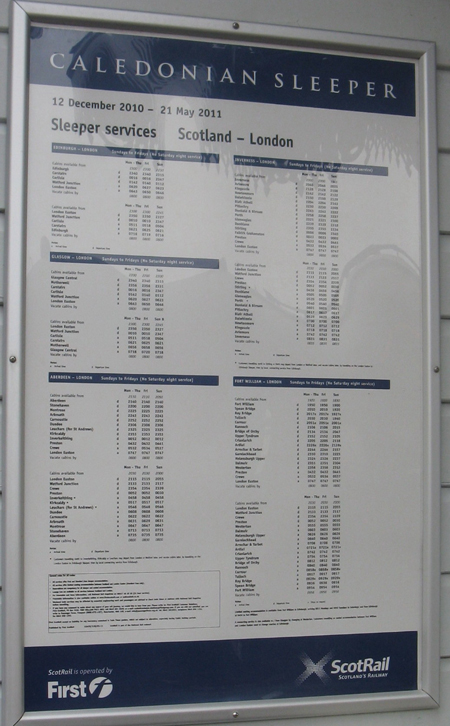 |
| Day 5 Inverness to Glasgow (186 miles) |
| The station concourse at Inverness, where our train backed in for the trip to Glasgow. |
| Once again, the train was double-headed by the two Black Five 4-6-0s |
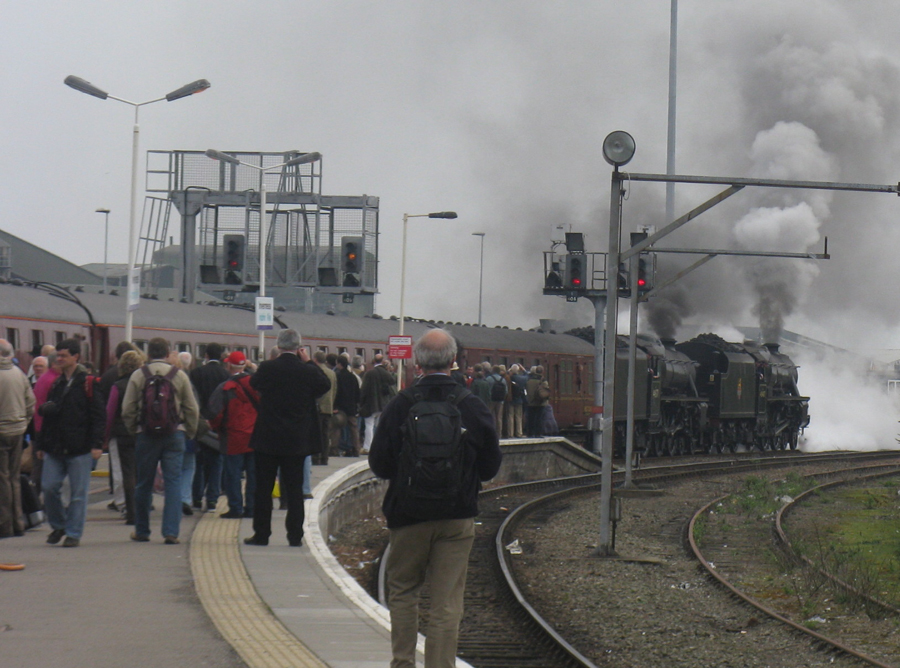 |
| The train made a water stop at Kingussie. |
| An unusual repeater signal at Kingussie. |
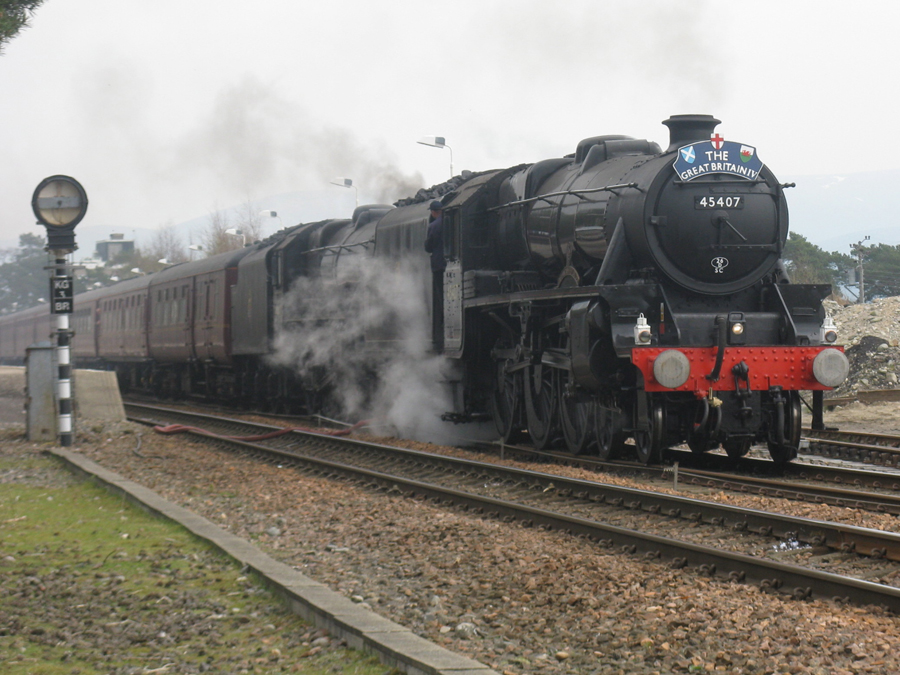 |
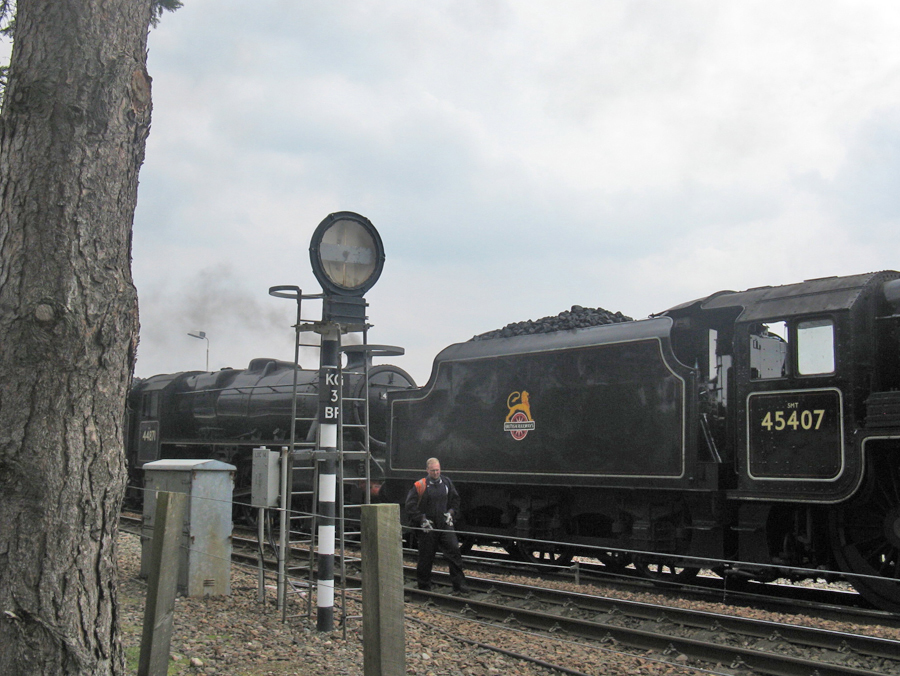 |
| The signal box (signal tower) at Kingussie, where our train met a DMU. |
| Some passengers had the rare opportunity to visit the interior of the working signal box. |
| Despite such modern touches as a computer and electric train indicator, switches and signals were still controlled by an old-fashioned mechanical (Armstrong) interlocking plant. |
| Among the signals controlled by the interlocking plant were these semaphores; this type of signal is still quite common in some parts of Scotland and England. |
| After leaving Kingussie, we passed one of Scotlands many distilleries. |
| The train made another water and service stop at Perth, a typical British covered station. |
| An unusual sign was placed temporarily on the front of the lead locomotive, perhaps at the request of the engine's owner. |
| Late in the afternoon the train arrived at the large station at Glasgow; passengers spent the night in a nearby hotel. |
This page was designed and is maintained by Mike Condren.
If you have materials
that you would like to contribute, contact me at mcondren@cbu.edu